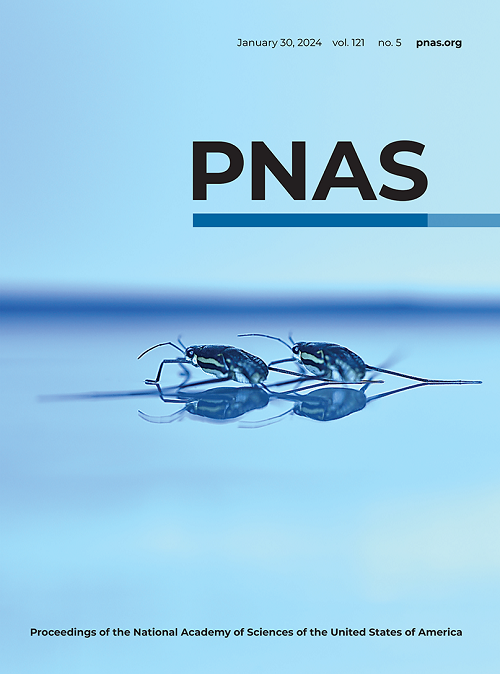Foxn3 is required to suppress aberrant ciliogenesis in nonphotoreceptor retinal neurons
IF 9.4
1区 综合性期刊
Q1 MULTIDISCIPLINARY SCIENCES
Proceedings of the National Academy of Sciences of the United States of America
Pub Date : 2025-07-15
DOI:10.1073/pnas.2500871122
引用次数: 0
Abstract
The retinal photoreceptors possess specialized sensory cilia critical for phototransduction while the nonphotoreceptor cells typically exhibit simpler primary cilia or lack them altogether. This dichotomy in ciliary architecture underpins the functional specialization of retinal cell types, but how this dichotomy arises and is maintained remains elusive. This study explores the role of the transcription factor Foxn3 in establishing and maintaining this divergence. We generated retina-specificFoxn3是抑制非光感受器视网膜神经元异常纤毛发生所必需的
视网膜光感受器具有对光传导至关重要的特殊感觉纤毛,而非光感受器细胞通常表现出更简单的初级纤毛或完全没有纤毛。睫状体结构的这种二分法支持视网膜细胞类型的功能特化,但这种二分法是如何产生和维持的仍然是难以捉摸的。本研究探讨了转录因子Foxn3在建立和维持这种分化中的作用。我们培育了视网膜特异性Foxn3条件敲除(Foxn3CKO)小鼠,结果表明Foxn3对于抑制非光感受器细胞(如双极细胞和无毛细胞)中的纤毛基因表达至关重要。Foxn3CKO小鼠视网膜电图b波振幅和振荡电位显著降低,表明视网膜内神经元功能受损。Foxn3缺失导致非感光神经元纤毛基因表达异位和纤毛发生异常,但不影响视网膜细胞的分化和分化。单细胞RNA测序、染色质分析和转录分析显示,Foxn3直接结合并抑制纤毛基因及其反激活子的启动子,包括Foxj1和Rfx家族成员。我们的数据共同强调Foxn3作为一个关键的转录抑制因子,可能通过阻止非光感受器神经元采用光感受器样纤毛特征来确保视网膜神经元适当的纤毛结构,并为控制视网膜发育和纤毛病的分子机制提供见解。
本文章由计算机程序翻译,如有差异,请以英文原文为准。
求助全文
约1分钟内获得全文
求助全文
来源期刊
CiteScore
19.00
自引率
0.90%
发文量
3575
审稿时长
2.5 months
期刊介绍:
The Proceedings of the National Academy of Sciences (PNAS), a peer-reviewed journal of the National Academy of Sciences (NAS), serves as an authoritative source for high-impact, original research across the biological, physical, and social sciences. With a global scope, the journal welcomes submissions from researchers worldwide, making it an inclusive platform for advancing scientific knowledge.

 求助内容:
求助内容: 应助结果提醒方式:
应助结果提醒方式:


